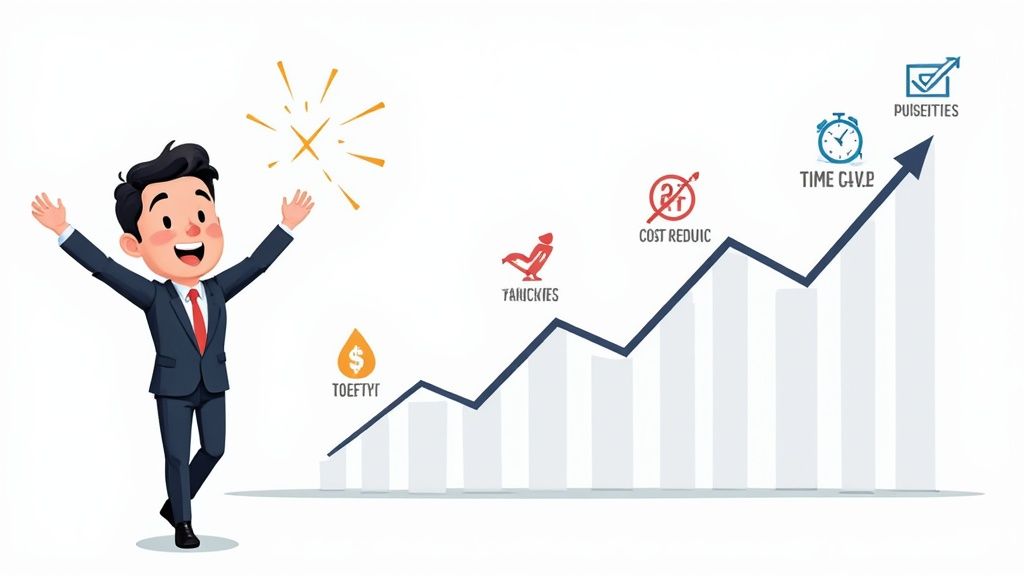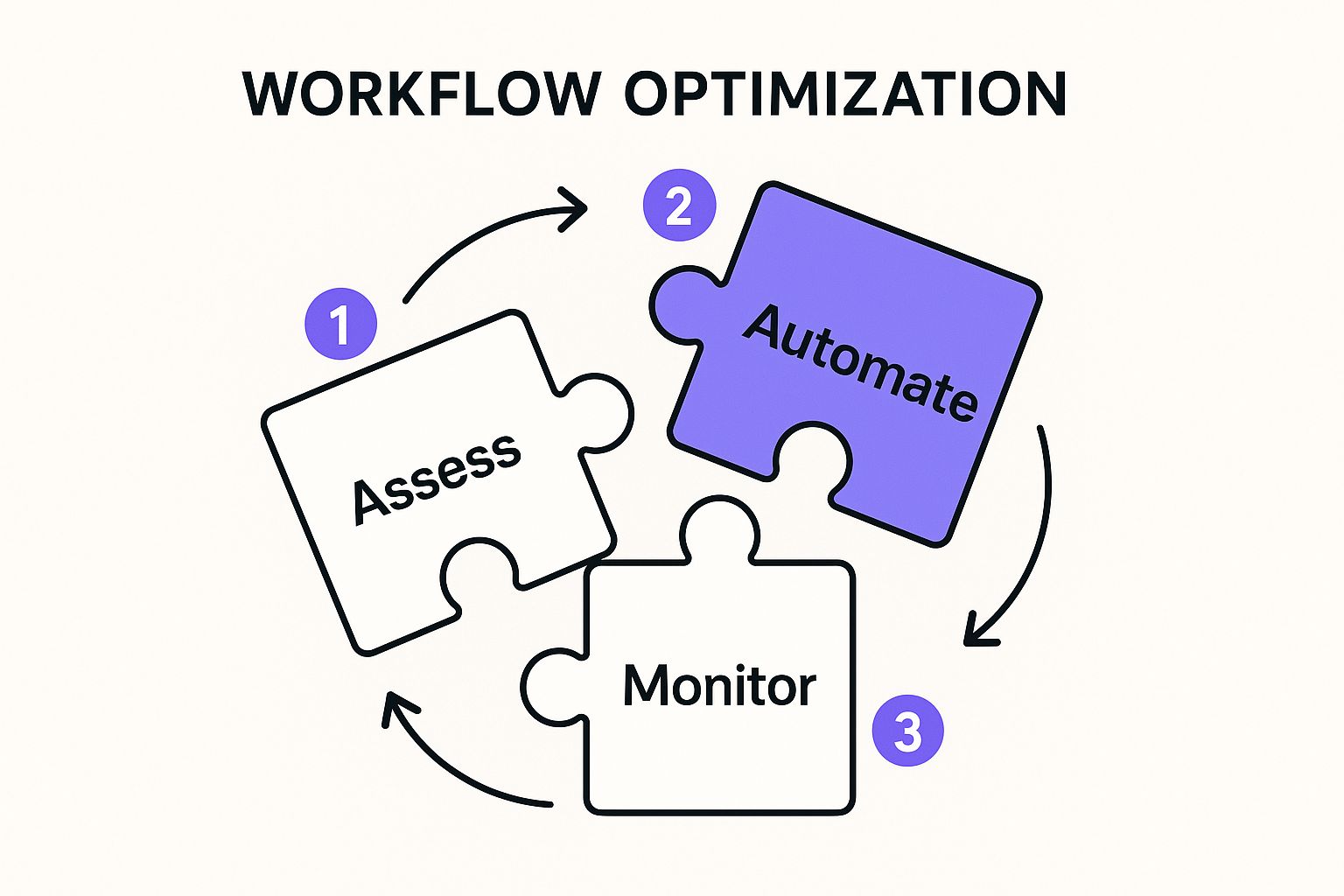Let's cut through the noise. Workflow optimisation services are not about buying fancy new software. They are about taking a strategic look at how work gets done. It means aligning your people, processes, and technology so your team can focus on what matters.
What Are Workflow Optimisation Services?

Imagine trying to cook a great meal in a chaotic kitchen. You have the best ingredients and a brilliant chef, but the knives are blunt and the pans are hidden. The result is frustration, delays, and a meal that is a shadow of what it could be.
Workflow optimisation is like redesigning that kitchen. It is about creating a space where everything has a purpose and a place, so your team can perform at their best. These services are a strategic partnership, built to eliminate the operational friction that kills morale and productivity. It is a process we undertake with you, not a technical fix we impose.
More Than a Tech Upgrade
It is a common trap. Leaders hear "optimisation" and immediately think "new platform." While technology is part of the equation, it is the last piece of the puzzle, not the first.
Real optimisation starts with people. It begins by understanding how your team handles their tasks every day. From there, we can introduce the right tools and strategies. Experts increasingly streamline business processes using AI and automation to clear bottlenecks and remove repetitive manual work. This is how you build a nimble organisation.
The goal is to create a system where work flows smoothly from one person to the next, with clear ownership and no roadblocks. That requires a proper look at how you operate right now.
Many companies make the mistake of automating a broken process. All they achieve is a faster way of getting poor results. You have to simplify the process first. That is why we always start with collaborative discovery and design.
Building Lasting Capability
A successful project does not end when a consultant hands over a report. It is about building capability within your team that lasts. Think of us as a copilot, working alongside your people to map their current workflows and co-design better ones.
This people-first approach is critical. It ensures new processes are not just efficient on paper but are also embraced by the people who use them every day. We help you create clear documentation and give your team the training they need to own the solution. This is how you achieve digital sovereignty, the freedom to run your business without being chained to old systems or outside help.
At the end of the day, workflow optimisation services are about creating a more resilient and capable organisation. They cut through operational fog, sharpen decision-making, and create an environment where your team can do their best work.









